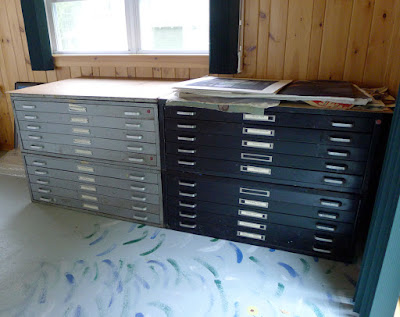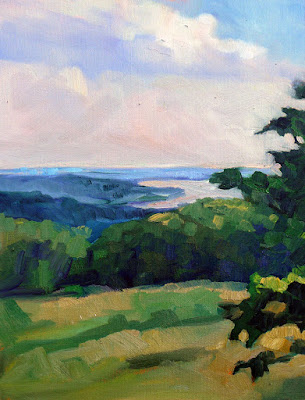 |
| My studio. Clifford doesn’t stay here but I have to remove some doors before he can be moved. Wish you were here. |
Since Friday, I’ve loaded half my earthly belongings on a 16’ rental truck, hooked my Prius up to it on a trailer, driven a gazillion miles, unloaded the truck and trailer and returned it to a rental center in Waterville, ME. It’s no surprise I’m moving slowly this morning.
The only way to live like a vagabond is to organize the hell out of your life, and that’s what I usually do. When you’re 25 and moving into your first home, you have a strong back and lots of young friends. When you’re my age, you have a weak back and you realize, sadly, that your friends are all in the same boat.
 |
| My business life, still shrink-wrapped. |
But I have a husband and children, and they have friends, and the combination got that truck loaded and out of Rochester. The problem was on the Maine side, where it was down to me and a crusty old codger who busted up his back as a stone mason. It took us five hours of brutal hard work to get the heavy stuff off the truck and into either the studio or the garage.
 |
| That’s my modem and router. I decided I needed coffee before I got it working, which is why this is late. Coffee, food, internet: McDonald’s. |
When I suggested he ride to Waterville with me to turn in the truck, he told me he was going home and taking a nap instead. “You can’t get they-ah from he-ah,” he told me in his broadest Maine accent.
 |
| This, my friends, is about a thousand pounds of paper and steel. Unloaded by the crusty old codger and me. Youth and talent are no match for old age and treachery. |
I can’t back the Prius off the trailer without a spotter. It was a Sunday, the rental place was locked up tight, and the only people around were hanging out the windows of the bar across the street.
“Just gun it and pray like mad,” my friend had suggested as he drove away.
I sloshed around in the mud, disconnected my car, pulled out the ramps, checked to make sure everything was neat. As I was about to take a deep breath and follow his advice, an old beater driven by a young gearhead pulled into the lot.
 |
| It’s a darn good thing I pulled out my stuff for Olana before I left Rochester. |
“You work here?” I asked him. Well, he didn’t, not exactly, but he guided me off the ramp anyway.
‘Lean less on your own understanding and more on God’s provision’ is something I give lip service to, but am not very good at. But, boy, it’s nice when it works.
Let me know if you’re interested in painting with me on the Schoodic Peninsula in beautiful Acadia National Park in August 2015. Click here for more information on my Maine workshops! Download a brochure here.





























